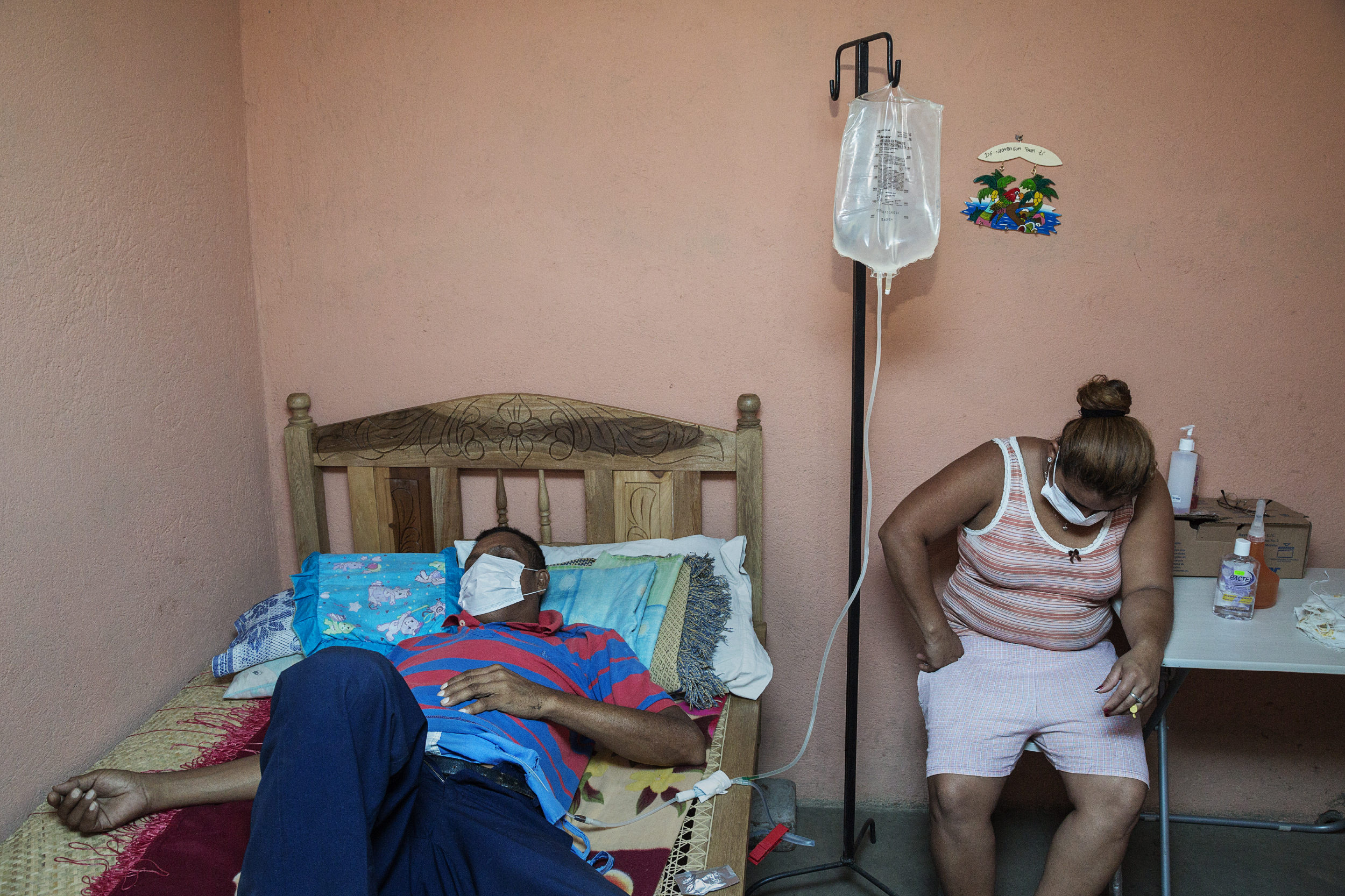A few weeks ago, I went with the La Isla Public Health team to accompany two nurses on a home visit to a patient on peritoneal dialysis treatment. In Nicaragua, peritoneal dialysis (PD) is the only viable option for many patients with end-stage kidney failure from chronic kidney disease (CKD), but the quality and outcomes of treatment are lacking in many ways. Our team has been spending this summer developing a protocol for evaluating a PD program here in Nicaragua, and we wanted to see first-hand the experiences of patients receiving this form of treatment.
Five of us squeezed into a taxi and headed off to a small community a few minutes from downtown Chichigalpa. Soon, we arrived. There were long rows of identical houses painted in bright pastels next to large open fields. The nurses entered the home first and then signaled us to come in.
As we walked inside, we heard moans coming from the bedroom. One of the nurses told us that the man was not feeling well and it would be better if we gave him his privacy. In the meantime, the man’s wife welcomed us and began telling us about her husband.
Her husband was a former cane worker in his sixties who began PD about 8 months ago. There had been some problems recently with his treatment and she had begun giving him antibiotics to clear what seemed like an infection. She showed us the discarded PD bags containing fluid drained from her husband’s abdomen. I remembered from studying PD protocols that the fluid should be clear. Instead, it was a bright pinkish-red, almost the color of a sugary refresco at one of the local comedores in León. She showed us the clean room that the cane worker union constructed for the family. Here was where the man would carry out his dialysis treatment four times a day, one hour at a time. It was hot and stuffy, she said, and no running water came out of the sink.
The man continued to moan in pain, and the nurse told the family that they would have to call an ambulance. After about twenty minutes, a white ambulance with a smashed headlight arrived. The man gingerly walked to the ambulance with the help of his son. His wife and daughter-in-law watched in silence. The man’s legs and abdomen were swollen, and he had a grimace fixed to his face. If they had to take out the catheter at the hospital, the nurse told us, they would not replace it.
We left soon after the ambulance took off. We left the family with some kind words but I did not know what else to say. The only curative treatment for end stage kidney disease is a kidney transplant; this man would not be receiving one. The man was dependent on dialysis to live; at the same time complications from treatment were killing him.
The next day, the former cane worker died in the hospital.
There are no simple answers. The man’s death certificate most likely listed kidney failure or peritonitis as a cause of death. But it might as well have blamed limited access to healthcare, poor working conditions, and unbreakable cycles of poverty instead.
My experience that day was eye-opening and humbling. The nurses were incredibly dedicated in their support of CKD patients, but there was a clear need for more resources. At the end of the day, we saw one patient out of the thousands that have CKD in Nicaragua. While we were charged with checking up on patients getting PD, many patients with end stage CKD receive no treatment at all. And many of those that do receive PD suffer from the illnesses brought on by the treatment itself. The man’s death was a stark reminder of the unbearable toll that CKD takes on the patients, families, and communities of Chichigalpa.
Will Levine
Featured Image:





